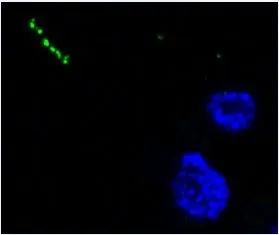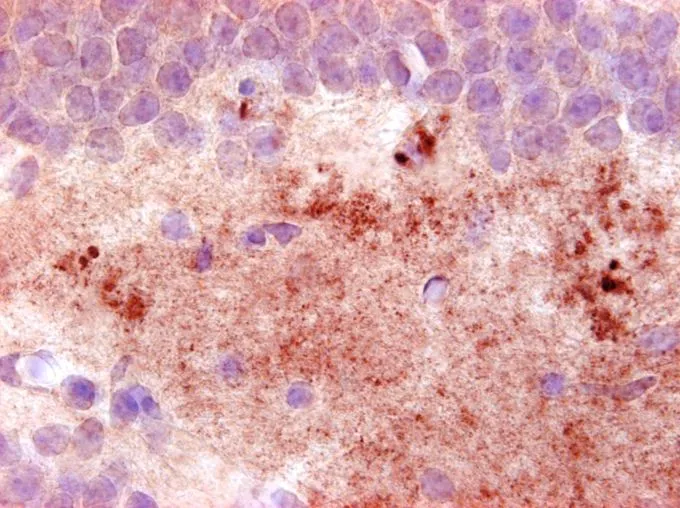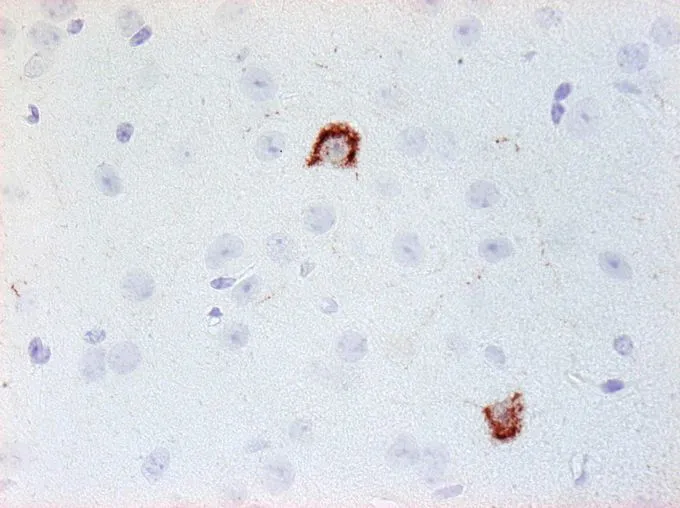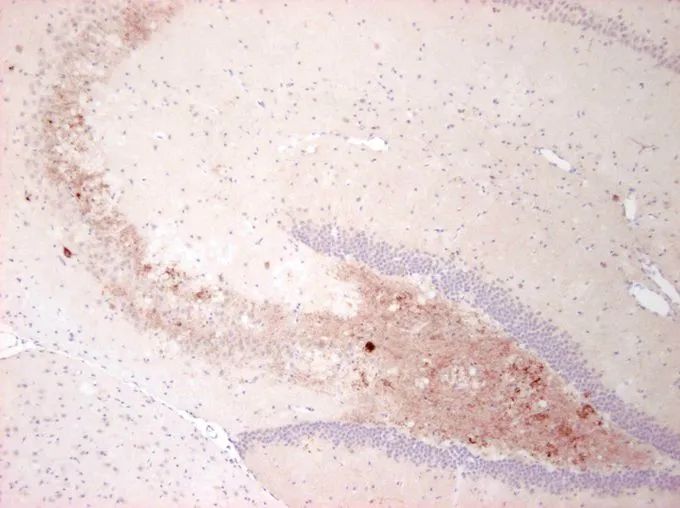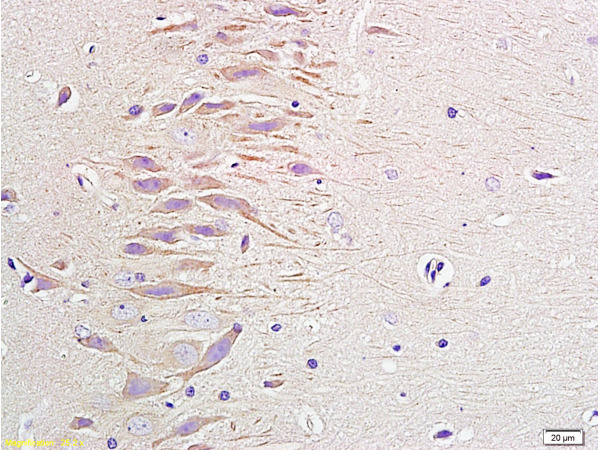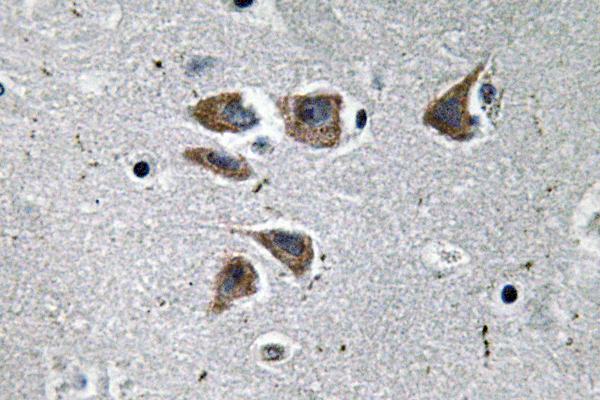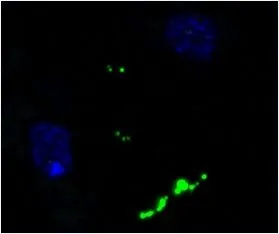
GTX60971 tested on tissue from human cerebral cortex, applying ultra thin sections using a technique called array tomography. (antibody: green, DAPI-stained nuclei: blue). The antibody labels NPY-positive processes in the neutrophil. Courtesy of Dr. Nancy ORourke, Stanford University.
Neuropeptide Y antibody [8]
GTX60971
ApplicationsImmunoFluorescence, ELISA, ImmunoCytoChemistry, ImmunoHistoChemistry, ImmunoHistoChemistry Frozen, ImmunoHistoChemistry Paraffin
Product group Antibodies
TargetNPY
Overview
- SupplierGeneTex
- Product NameNeuropeptide Y antibody [8]
- Delivery Days Customer9
- ApplicationsImmunoFluorescence, ELISA, ImmunoCytoChemistry, ImmunoHistoChemistry, ImmunoHistoChemistry Frozen, ImmunoHistoChemistry Paraffin
- CertificationResearch Use Only
- ClonalityMonoclonal
- Clone ID8
- ConjugateUnconjugated
- Gene ID4852
- Target nameNPY
- Target descriptionneuropeptide Y
- Target synonymsPYY4, pro-neuropeptide Y, prepro-neuropeptide Y
- HostMouse
- IsotypeIgG1
- Protein IDP01303
- Protein NamePro-neuropeptide Y
- Scientific DescriptionThis gene encodes a neuropeptide that is widely expressed in the central nervous system and influences many physiological processes, including cortical excitability, stress response, food intake, circadian rhythms, and cardiovascular function. The neuropeptide functions through G protein-coupled receptors to inhibit adenylyl cyclase, activate mitogen-activated protein kinase (MAPK), regulate intracellular calcium levels, and activate potassium channels. A polymorphism in this gene resulting in a change of leucine 7 to proline in the signal peptide is associated with elevated cholesterol levels, higher alcohol consumption, and may be a risk factor for various metabolic and cardiovascular diseases. The protein also exhibits antimicrobial activity against bacteria and fungi. [provided by RefSeq, Oct 2014]
- Storage Instruction2°C to 8°C
- UNSPSC12352203
References
- Nakanishi S, Mantani Y, Ohno N, et al. Histological study on regional specificity of the mucosal nerve network in the rat large intestine. J Vet Med Sci. 2023,85(2):123-134. doi: 10.1292/jvms.22-0433Read this paper
- Zhang D, Yamaguchi S, Zhang X, et al. Upregulation of Mir342 in Diet-Induced Obesity Mouse and the Hypothalamic Appetite Control. Front Endocrinol (Lausanne). 2021,12:727915. doi: 10.3389/fendo.2021.727915Read this paper

